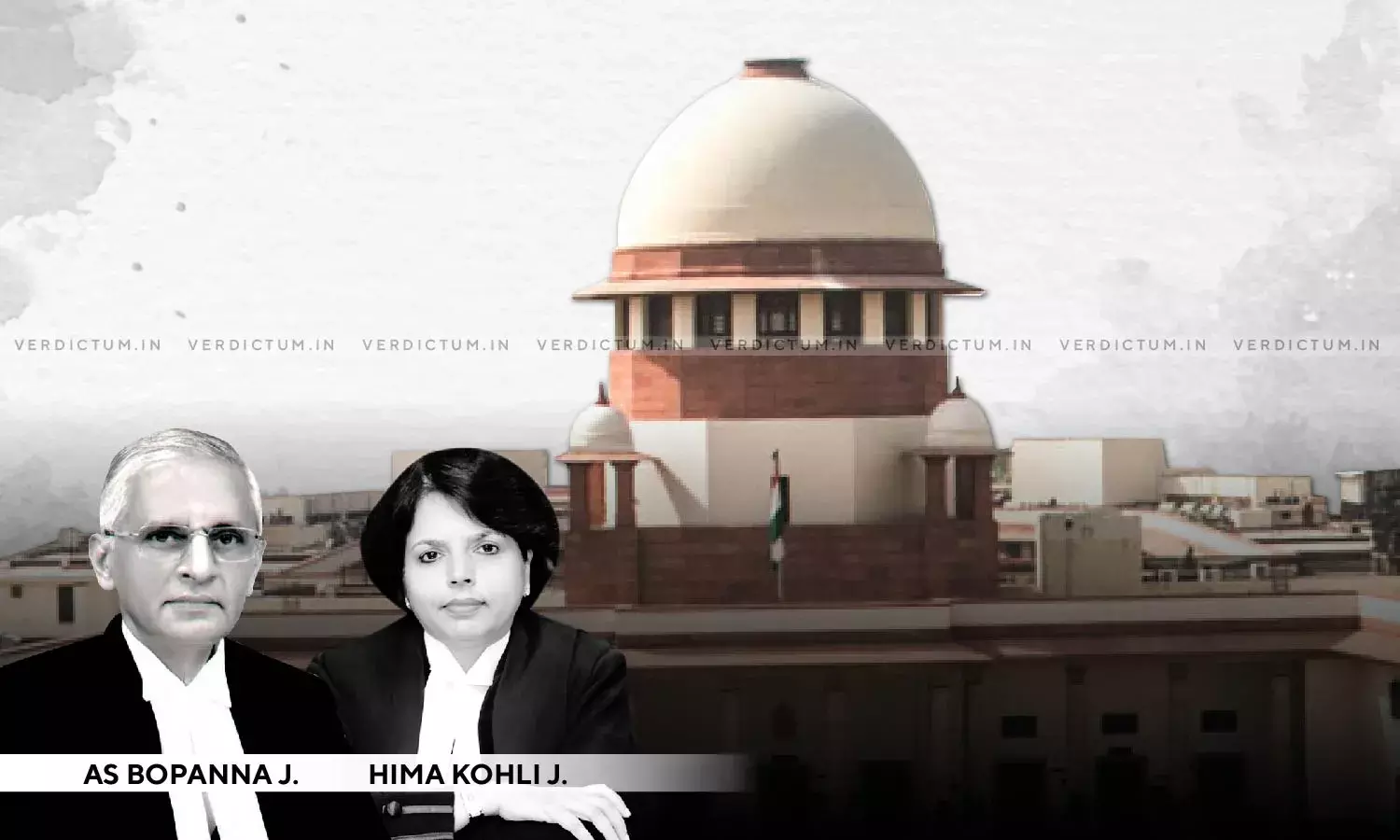HC Was Not Justified In Merely Relying On Circular Fixing Floor Rates: SC Sets Aside Order Reducing Market Value Of Acquired Land

The Supreme Court has set aside Punjab and Haryana High Court’s Judgment reducing market value in respect of the lands acquired for the construction of Express Highway.
The Apex Court observed that when the parties were before the Court in the first round of litigation, the Court without relying upon the circular fixing floor rates remanded the matter to the reference Court for fresh consideration. The Court noted despite this, the High Court merely relied on the circular providing for the floor rates despite other evidence being available on record.
“…the High Court in the present round has merely relied on the circular providing for the floor rates despite other evidence being available on record. Such determination is therefore not justified.”, Justice AS Bopanna and Justice Hima Kohli observed.
In this case, the land of the appellants was acquired for the construction of Express Highway. The award was passed by the District Revenue OfficercumLand Acquisition Collector (LAO), and the market value was fixed at Rs.12,50,000/ per acre for all kinds of lands.
The land losers including the appellants sought reference. The Reference Court enhanced the market value to Rs.43,17,841/ per acre.
On an appeal, the High Court enhanced the market value to Rs.62,11,700/ per acre.
The land losers as also the State of Haryana assailed the High Court’s Judgment before the Apex Court. The Supreme Court remanded the matter to the Reference Court to take a fresh decision in the matter.
The Reference Court on reappreciation of the evidence and materials available on record determined the market value of the acquired lands at Rs.22,00,754/ per acre.
The High Court modified the judgment of the Reference Court and reduced the market value to Rs.14,52,010/ per acre. This Judgment came to be challenged before the Apex Court.
Advocate Vibhuti Sushant Gupta appeared for the appellants whereas Senior AAG Alok Sangwan appeared for Respondents.
The Supreme Court noted that “From the judgment of the Reference Court it is noted that the sale exemplars which were relied upon by the respondentHSIIDC at Ex.R5/R12, Ex.R6, Ex.R9, Ex.R13 to Ex.R16 were discarded since they depict the market value of the land which is lower than the amount awarded by the Collector. To that extent, the reason assigned by the Reference Court is not justified.”
The Court also noted that the High Court was not justified in merely relying on the circular fixing the floor rates when other evidence was available on the record pursuant to the remand made.
The Court observed that where a large extent of agricultural land belonging to a single owner is acquired, it would be safe to rely on such sale exemplars of large extents.
The Court added that however, the difficulty arises when a person holds a smaller extent of land which is classified as agricultural land but would have lost its character due to noncultivation and urbanization when such land is fit to be used for nonagricultural purposes.
The Court further noted that “It is in that circumstance, such land though classified as agricultural will have to be treated as a land having nonagricultural potential more particularly for urban use. In that light, in appropriate cases depending on the location and the extent of land held by each of the land losers who is a part of the same acquisition, is required to be kept in view, while applying the yardstick to reckon the appropriate exemplar and arrive at the ultimate conclusion.”
The Court held that in the facts and circumstances of the case, the market value to be determined in the would be Rs.25,20,000/ per acre.
One other aspect which was raised was that in the first round of the case, a higher rate of compensation was determined and before the judgment was set aside and remanded, in some of the cases the execution was levied and the amount was paid to the land losers.
The Counsel for the appellants contended that if the Court determines the market value at a lesser rate than what has been paid to some of the appellants, such of those land losers who have received the amount, be protected against recovery.
To that end, the Court noted “…we are clear in our mind that it would not be possible for this Court to create two sets of land losers who are otherwise similarly placed, in respect of the same acquisition process after having determined the market value at a particular rate which is applicable to all of them.”
Thus the Court held that if any excess amount has been received by any of the land losers than the extent of the compensation determined herein, the excess amount, in any event, is recoverable.
Cause Title- Ravinder Kumar Goel v. State of Haryana & Ors
Click here to read/download Judgment

